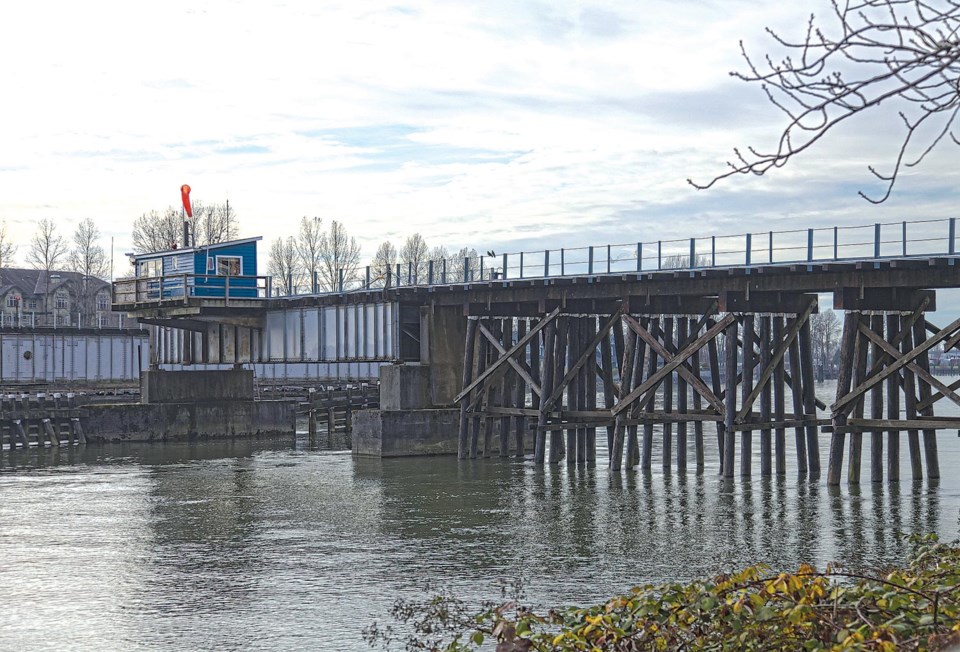When Sandeep Bhangu and his wife, Janak, were looking for a place to live, they considered buying a home in Port Royal because, at the time, there was talk of a water taxi to the Quay. This was nearly five years ago and there is still no pedestrian link to New Westminster - but the Bhangus are optimistic.
"If we could walk to the Quay, or ride our bikes, that would be so nice," Sandeep Bhangu said.
The City of New Westminster recently conducted a survey on possible options for a pedestrian link between Queensborough. The planning department received about 150 responses to the survey.
Options being explored by the city include a low-level pedestrian and bicycle crossing on or near the rail bridge at the east end of the Quay and a separate drawbridge. Both possibilities would have a movable centre span to allow boat and ship traffic to travel down the Fraser River.
According to a staff report, building a crossing connected to the rail bridge would cost about $5 million, while a drawbridge, or "bascule" bridge, would cost about $9.5 million. The city has $6.4 million in gaming funds to use towards building the crossing.
Whatever option is chosen, however, a crossing between the 'Boro and the Quay is still several years away. The city has until 2017 to use the gaming funds to build a crossing.
But no matter the option chosen by city council, the Bhangus would be pleased with anything that gets their family out of their car.
"Whenever I don't have to get in my car, I'm happy," said Janak Bhangu.
Cars, cars and more cars
Traffic is increasing in New Westminster and over in Queensborough things are just as congested.
In New Westminster 60 per cent of residents drive to work, while in Queensborough 72 per cent of the population drive to work, and that number is expected to grow, according to the City of New Westminster's Queensborough neighbourhood profile, based on statistics from Canada's 2006 census. The percentage of residents in Queensborough who drive to work is already up five per cent between 2001 and 2006. This is a stark contrast to a four per cent decrease in the rest of New Westminster.
Despite the increasing number of commuters driving in, out and through the 'Boro each day, some people believe the congestion is as bad as it used to be.
"The way they designed everything on the other side of the highway is perfect. It's like the busier (area)," Sandeep Bhangu said.
Bhangu said that before the highway overpass was built, traffic was a lot worse than it is today.
"When I was growing up here (Queensborough), before they made the overpass, the traffic used to go way down to the next four-way stop, like Ewen Avenue, all the way through Queensborough. Right around three or four o'clock, it'd be just a line up of cars. That's what you saw every single day," he said.
With the overpass, traffic is no longer lined up through Queensborough. Instead, commuters are diverted over the area, causing less interference and frustration for residents.
"The bridge might get backed up but that's just like any other bridge to me," Bhangu said.
- With files from Theresa McManus



